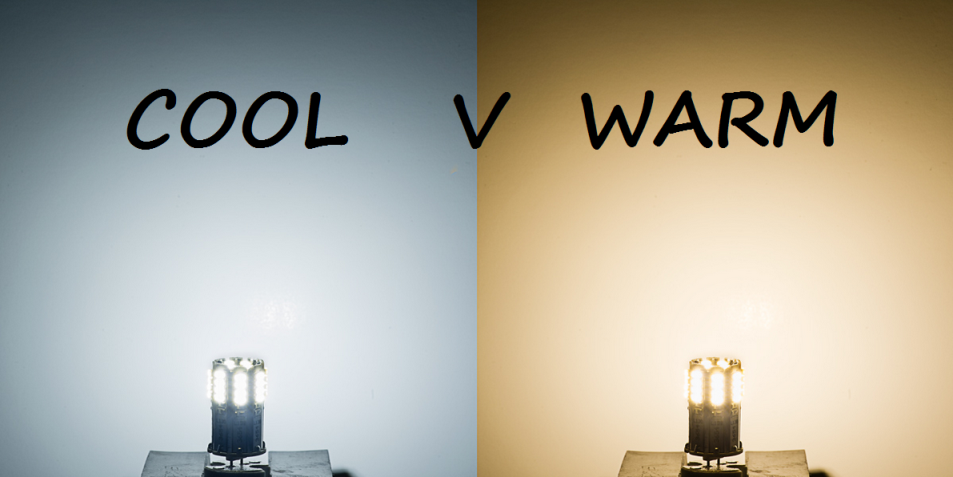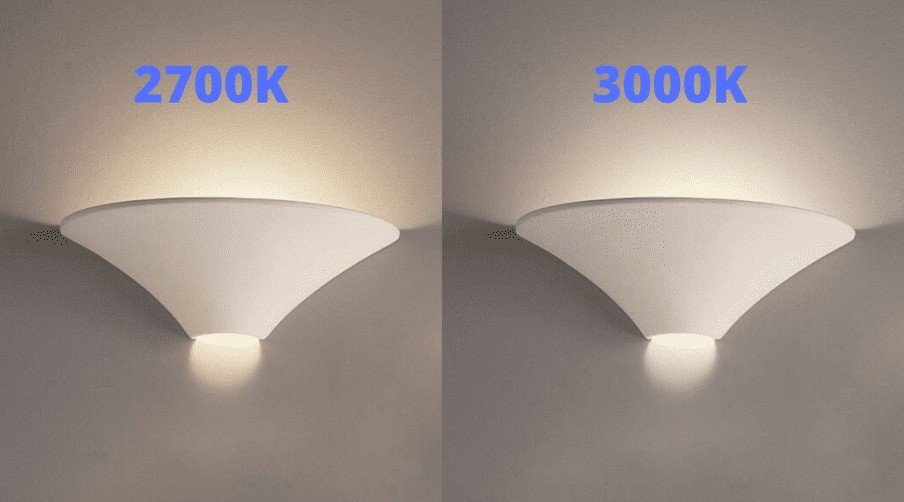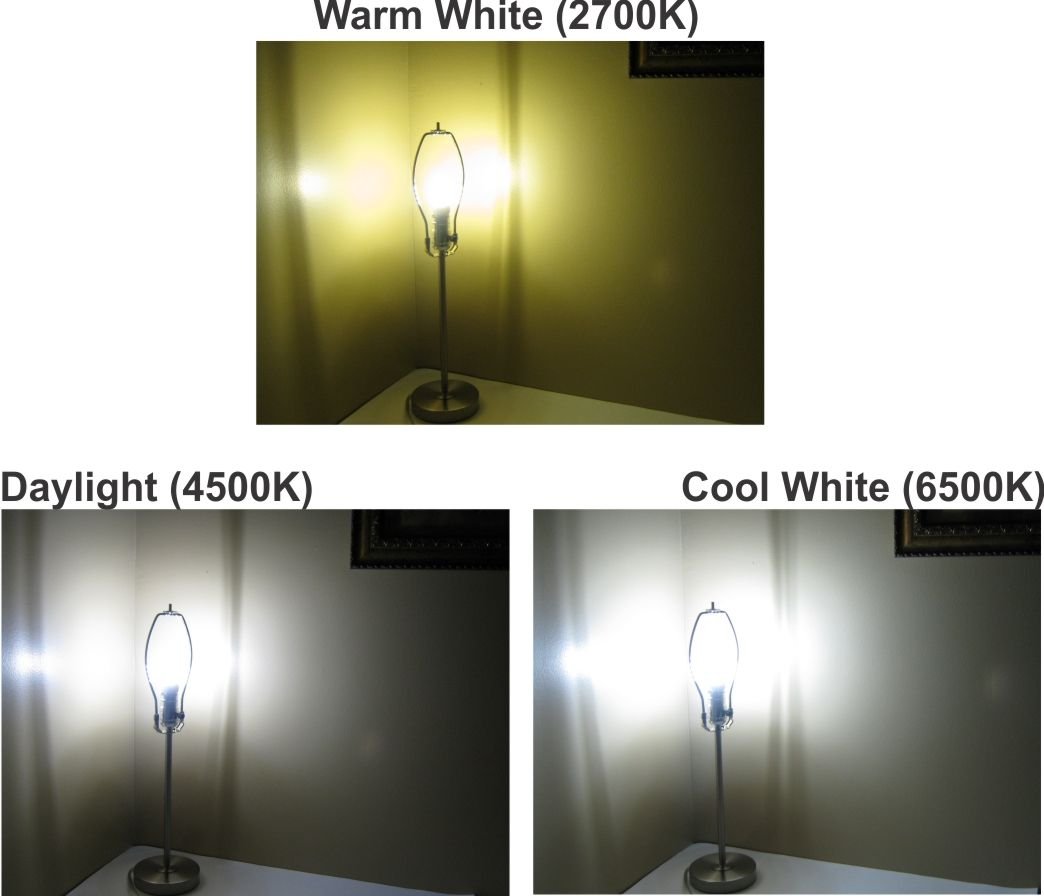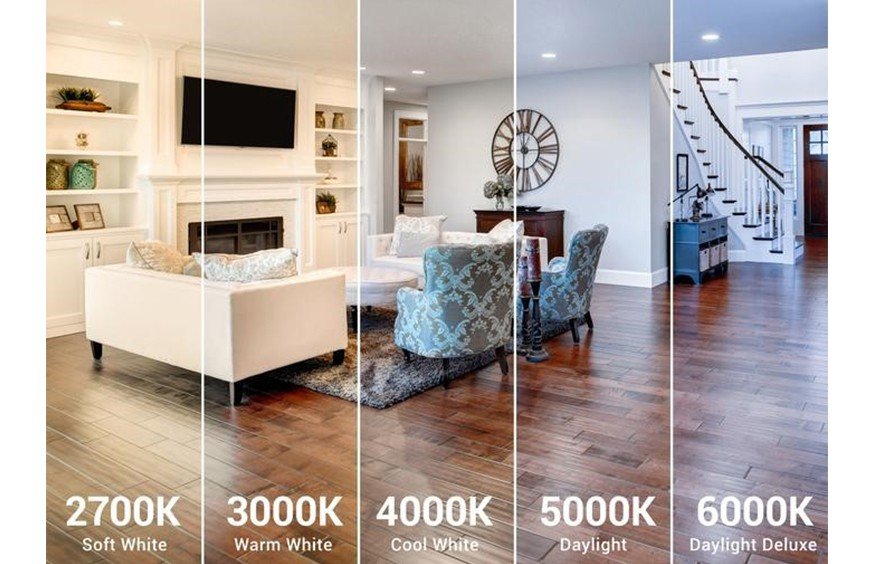New products
- Link floor lamp$799.99 PriceAlabaster Half Spheres...$3,999.99 PriceVintage Murano Style Glass...$699.99 Price
Warm Light Bulbs Vs Cool Light Bulbs: What Should You Use?
Choosing between a warm light bulb and a cool light bulb can often be tricky. Especially if you are new to decorating your home, choosing the correct bulb is essential. Many homeowners need help determining where to place their warm light bulbs or their cool light bulbs. Without the correct placement, you may spoil your home's atmosphere.
Warm light bulbs create a cozy and relaxing atmosphere that is more suitable for places like the living room, bedroom, dining room, etc. On the other hand, cool light bulbs allow better visibility and encourage focus. It goes well with study rooms, offices, and kitchen.
It is best when homeowners use a combination of warm light bulbs and cool light bulbs in their houses. After all, these lights create a different atmosphere and support other functions based on where you place them. Light bulbs are vital to creating the perfect environment in your home. In this article, we will help you to navigate through warm and cool light bulbs.
Choosing Between Warm And Cool Lights
Cool lights are essential for retaining attention and encouraging focus. So, this type of lighting is mandatory for office or working spaces, study rooms, desks, kitchens, etc. Contrarily, warm lights create a relaxing aura. It is perfect for the living room, bedroom, dining or hallways.
There are no hard and fast rules to follow when deciding between cool and warm light for your home's lighting design. It all comes down to personal preference and the goals you want to achieve with your lighting scheme. Warm light is associated with a sense of cosines, which makes it appealing for homes, ballrooms, or party spaces to assist comfort.
Whereas cool light is associated with starkness and productivity. This attribute denotes better suitability for commercial places or workspaces. For example, offices and hospitals will be much more in need of cool light to keep our brains stimulated and working. So,experts adviseusing cool white lights in such places to promote productivity and focus.
Hence, specific spaces better suit the characteristics of different light temperatures than others. Mixing different light temperatures across the various levels of your lighting scheme is best. That is why a well-thought-out lighting design is critical, ensuring that any room can be cozy and comforting or stimulating and functional, depending on the situation.

Which Light Bulbs Give Warm Light?
The light bulbs containing a Correlated Color Temperature (CCT) rating between 2,700 and 3,000 Kelvin give warm light. These lights have a yellowish tint which often has orange or red shades to create a cosy environment.
To ascertain light bulbs based on warm to cool tones, the temperature of light is measured in Kelvins. In the correlated colour temperature chart, the higher the kelvin value is, the colder
and brighter the light is. Naturally, you may be wondering which bulbs are suited for warm light. The answer is- light bulbs ranging from 2,700 to 3,000 Kelvins give off a warm light.
Warm light contains more red, orange, and yellow tones, resulting in a softer, cosier light. So, if you are looking forward to buying warm light bulbs, check for the CCT value. Make sure it matches the warm light range requirements before purchasing. This way, you can safely decorate your living rooms, dens, and bedrooms.

What Does A Warm Light Bulb Mean?
A warm light bulb means that the light emitted from it will contain yellow to red tints creating a peaceful and relaxing atmosphere. These light bulbs are typically less than 3,000 Kelvin in the CCT chart. Warm light bulbs are suitable for cosy indoor atmospheres.
Warm light bulbs are all those light bulbs that fall between 2,700 to 3,000 Kelvins. This light colour is produced by an incandescent (2700K) or halogen bulb (2850K). When an incandescent or halogen bulb is dimmed even further, it appears warmed and slightly orange. These light bulbs are called warm because their lighting is not crisp or harsh to the eye.
When we say warm light bulb, we do not point toward the temperature of the light bulb. Instead, the terms 'warm' and 'cold' refer to the tone or colour of the light. It does not refer to the physical heat of the lamp. Similarly, warm light bulbs also get their name from creating a more welcoming and relaxing atmosphere, making people feel cosy and warm.
What Is Warm Light Best For?
Warm light is best for creating a comfortable environment in your indoor spaces or homes. It goes best in places where you don’t need to practice alertness. For example- bedrooms, living rooms, dining tables, hallways, etc. Warm lights are also perfect for doing aesthetic designs.
As many of us may not know, the lighting settings in our homes can assist in our cardiac rhythm. Warm light is better suited to our circadian rhythm's goal of stimulating melatonin production. This allows better sleeping cycles and relaxation. That means warm lights are directly related to better sleeping, peace, and creating comforting moods.
Ultimately, lighting becomes a significant aspect of biophilic design principles. Weak, indirect, and warm lighting creates soothing and quiet environments. It is not the best atmosphere for productivity. However, warm lights will be your best choice if you want to make the opposite impact. It could be perfect in a restaurant, ballroom, resting area, or bedroom.

Are Warm Lights Better For Your Eyes?
Yes, warm lights are better for your eyes than cool lights. Experts also consider warm lights to be the healthiest for our eyes.
If you are looking for the best lighting option that is the healthiest for your eyes, the answer is- warm lights. These types of lights are the most beneficial to the eyes. Unlike cool, blue lights, warm lights are not harsh to the eye. A study published in the American Journal of Public Health in 2011 discovered that bright, cool lights increase the risk of eye diseases by 12%.
On the contrary, warm light produced by incandescent or LED light bulbs is protective for your eyes. This is because these lights have been filtered to be softer and more suitable in comparison. Especially for reading, it is better to go for warm light options. This will not strain your eyes or put harsh pressure. Thus, warm lights are better for keeping your eyes healthy.
What Is The Coolest Type Of Light Bulb?
The coolest type of light bulbs is fluorescent and LED light bulb. These light bulbs can reach the cool light CCT range and be energy efficient to decrease heat omission. So, fluorescent light bulbs are often said to be the coolest type of light bulb.
By cool light, we mean the light emitted by bulbs that sit around 6,500 Kelvins. Cool lights can even reach up to 10,000 Kelvins at times. There are debates about what light bulb is the coolest. Fluorescent light bulbs are generally known as the coolest light bulbs because of their CCT ranges.
Similarly, comparing incandescent and fluorescent lights, it is seen that fluorescent lights produce approximately 75% less heat. LED lights are also a close second regarding CCT values and energy efficiency. So, these light bulbs are typically considered the coolest type of light bulb.

Which Is Brighter Cool White Or Daylight Blubs?
In comparison between cool white and daylight blubs, the brighter light is daylight. Daylight bulbs are on the higher end of the spectrum that can range up to 10,000 Kelvins. These lights are some of the brightest options to get, similar to natural light.
Bulbs that emit light between 4100K and 5000K are considered "cool white," and they begin to have a slightly blue tint to them. Bulbs that emit light at around 6500K are referred to as "daylight bulbs," and they have a distinct blue and cool sensation. In terms of brightness, daylight will appear brighter, more alert, and more focused than cool white light.

Conclusion
Now that you know about the difference between a warm light bulb and a cool light bulb, you can have a better grasp on choosing the proper lighting for your home or office. So, you can now apply the type of light that is best for your specific needs. Thanks for stopping by.







